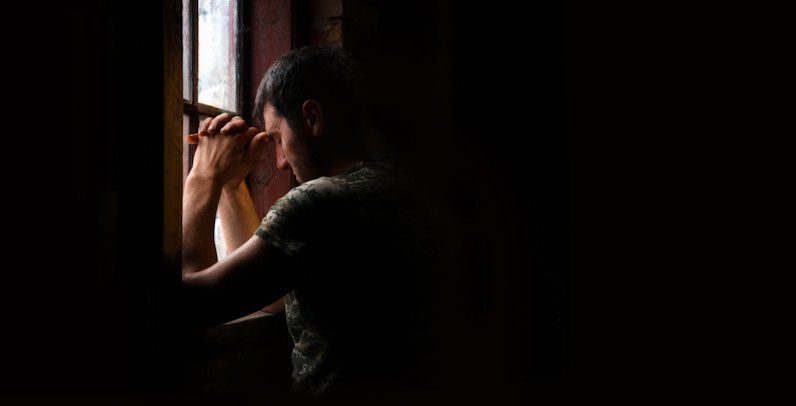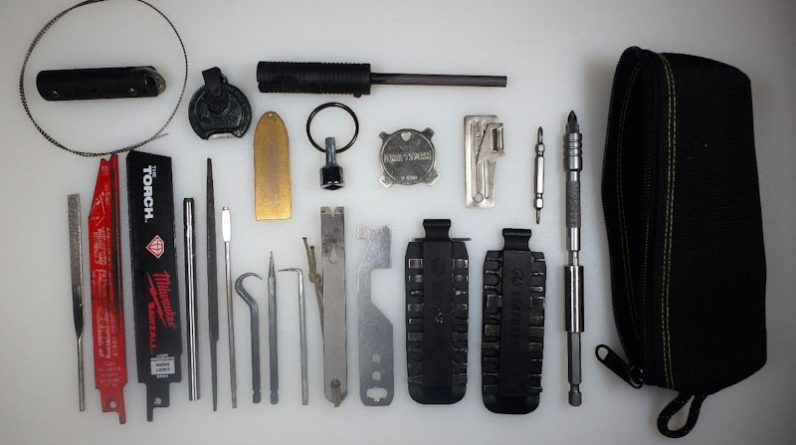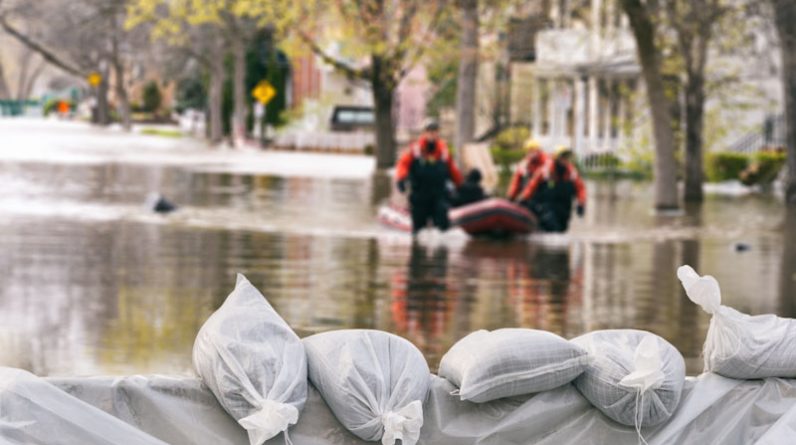Overcoming a disaster effectively as a prepper is about more than just vaulting the immediate obstacles. You’re constantly evaluating your needs in the short term and long term — making sure you thrive rather than survive following any disaster.
This involves paying some attention to how to live safely and comfortably. What resources help you to overcome emergencies while also supporting you in the weeks or even months beyond? How can you adjust your lifestyle to be more resilient to disruptions of disasters?
We’re going to run down a selection of the areas you should focus on.
Keep Food Plentiful and Safe
Food has to be a primary consideration. After all, heading to the grocery store every day isn’t particularly practical, and who’s going to be delivering pizzas during and following an emergency? Your comfort and health rely upon having access to nutritious food as and when you need it. It’s also way less stressful to know you always have something to eat.
One popular and self-sustainable approach is to grow your own fruits and vegetables. Depending on the scenario, though, it’s worth considering whether the climate and conditions are conducive to open-air farming. Planting at least some of your crops beneath polytunnels or polytents may help to protect them from weather and pests. Indeed, if you’re cultivating mushrooms and other fungi, these assets can help you have greater control over the humidity they need to thrive.
Once you’ve harvested your garden and crops, you likely have meats and other perishables you need to save and protect. It’s important to take how you retain them seriously. Proper food storage maintains safety standards and even impacts the flavor of your items. For long-term storage, your perishables should be wrapped well and stored in a refrigerator. Meats should be wrapped in foil and stored in a freezer, wherever possible. Non-perishables, like grains and canned goods, should be kept in a cool, dark, and dry place. You could also consider preserving some of your meats with curing, and your fruits and vegetables through pickling and fermenting.
Establish Solid Resource Management
When you start to run out of the essentials in everyday life, it’s annoying. However, when you’re living off the grid or in a survival scenario, there’s an added element of stress of resource depletion. Therefore, your safety and comfort are dependent on strong resource management practices.
Consistent organization is the bedrock of this. Yes, keeping records will be among the most boring of your prepping activities. Yet, it still holds the key to staying aware of what you have available and enables you to take action well in advance of urgent needs. Therefore, you must spend a little time every couple of weeks updating an inventory of all the essential items in your home.
This includes foodstuffs, first aid and medical supplies, and batteries, among other items. Take note not only of the numbers of these items you have available but also their conditions. You should keep records of other elements that need to be replaced regularly, such as air and water filters. Top up or change these items before they absolutely need it. It’s also important to keep physical versions of these records in a protected and accessible place, so you don’t have to rely on your internet access or electricity to see digital lists.
Another point of good resource management is committing to reusing, repairing, and recycling. Avoid relying on the availability of new products for every need you have. Learn how to patch everything from clothing to roofing. Start utilizing waste products as compost for your vegetable garden. Learn how to repurpose old paper and cardboard for papercrete that can strengthen walls and structures.
Make Smart Energy Choices
It’s become strikingly clear in recent years how important energy independence is. This isn’t just about making certain you have resources available in the event of natural disasters, which are expected to arise more frequently in some areas as a result of climate change. You also need to safeguard against the potential for traditional energy suppliers becoming unreliable or simply unaffordable. As a result, you must start making smart energy choices for the sake of your comfort and safety.
In some places, there’s legislation in place that makes living off the electricity grid either impractical or just plain unlawful. This doesn’t mean that you can’t diversify your energy supply. This could include supporting your traditional sources with solar energy. You might also invest in a generator for emergency backup power. At the very least, a combination of renewable and non-renewable energy is a well-rounded approach.
Part of your minimal reliance plan could also involve being more mindful of your usage. One of the downsides to having a constant and unlimited supply of energy is it’s easy to expect this will always be there and build your life around it. Your finances, prepping efforts, and lifestyle benefit from taking this down a notch. Take a look at everything you’re using electricity for and whether there are manual alternatives. Perhaps you can replace bulbs with lower-energy alternatives in areas where stark illumination isn’t necessary.
Boost Your Indoor Air Quality
You’ve got to breathe, that’s a given. Unfortunately, outdoor air quality has already begun to degrade in many areas, particularly those with significant industrial presence. In the event of a disaster, your supply of air may be compromised further, which makes stocking up on protective respiratory equipment with a chemical or compressed gas oxygen supply a must. If you’re creating an underground bunker or dwelling, maintaining consistent airflow is vital too. In both instances, it isn’t just the presence of air you need for your comfort and safety. You also should put some thought into the cleanliness and purity of the air you’re breathing.
Start by considering filtration. Your choices here will depend on how extreme the circumstances are that you feel you need to prepare for. There are an increasing number of high-efficiency particulate absorbing (HEPA) filter systems that can remove various airborne elements. In particular, HEPA reduces particulate matter and bacteria. You could also consider supporting your HEPA filtration with an ultraviolet (UV) purifier that can kill certain viruses and bacteria before they reach the filter.
Nevertheless, it’s important to remember that these filtration systems require energy to operate. While HEPA filters are usually designed to be efficient, they still need to be powered reliably. You may therefore need to make contingency plans should the electricity fail.
Alongside human-made systems, you should consider populating your home with a variety of plants that boost indoor air quality. Bamboo palms, Gerbera daisies, and aloe vera are known to help remove toxins, such as benzene, from the air. Peace lilies and rubber trees can also help counteract carbon monoxide. Aside from supporting your long-term health and comfort, having a lot of plants around tends to be a more pleasant addition to your surroundings.
Ensure the Purity of Your Water
Part of your prepping should certainly involve maintaining a plentiful supply of clean bottled water. Nevertheless, this supply isn’t going to last forever. You have to make some adaptations to your home and life to make certain that even when you don’t have bottled water, you have access to pure sources of essential hydration.
There are, of course, home water treatment systems available. Utilizing these provides you with a certain amount of confidence that the systems you use are likely to be relatively reliable and built on solid scientific principles. From a day-to-day use perspective, you might consider investing in under-sink filtration or whole-house carbon filters. However, when you’re researching these, it’s important to prioritize systems with the smallest micron filtration size. You should also be mindful that these systems require replacement filters after a certain gallon usage, so you’ll need to maintain a supply of filters and learn how to replace these yourself.
But what about in emergencies where a home filtration system isn’t available or not functioning? Well, it’s worth gathering and storing some of the items that you can use to purify your water in a pinch. You should certainly consider stocking up on some straw-style personal filters. However, you can also construct a basic filtration system from layers of sand, gravel, and charcoal. This is unlikely to remove all pathogens, but it can at least give you access to drinkable water. Keeping these items on hand can be a lifesaver in extreme circumstances.
Reinforce Your Psychological Comfort
When you’re prepping for survival, it can be very easy to simply focus on the physical components of your comfort and safety. Do you have food? Check. Medical supplies? Check. But these aren’t the only essential components of overcoming the challenges of survival. You also need to make certain that your psychological and emotional needs are catered for.
Firstly, start to adopt some stress management techniques and resources. Living during extreme situations places a lot of pressure on you which is likely to take a mental toll. You might think you’ll be just fine. But in truth, few of us know how we’ll react until the moment challenges arise.
Aim to gain a little self-awareness of how you feel when you’re stressed, so you’re better able to take action. Regular mindfulness, in which you mentally check in with yourself, is a great tool. However, recognizing the physical influencers of stress can also be useful warning signs of when to just take a break. Remembering the anagram “HALT” — hungry, angry, lonely, and tired — allows you to identify when you need to step away and perform a little self-care.
You might also populate your home or shelter with the tools for stress relief. This may be some intellectually stimulating games or puzzles. Having a treadmill, elliptical, or punching bag in the home can also give you exercise that aids your stress management.
Beyond this, you should consider that one of the best resources for psychological safety and comfort is community. Fostering connections with like-minded people can provide you with effective emotional support during trying times. Not to mention that it can stave off the isolation that can come with off-the-grid living. You’ll also benefit from the different perspectives, knowledge, and skills each member of your community has, which can relieve a lot of personal pressure.
Conclusion
As a prepper, ensuring you live in comfort and safety is important for both survival and your ongoing well-being. You’re likely to face significant challenges in the weeks and months after an emergency event. Knowing that you always have a healthy and pleasant space to spend your time in is likely to be reassuring even on the bleakest days. Not to mention that establishing the components we’ve covered can keep you in a better physical and psychological condition to address recovery efforts.
These aren’t by any means the only components of safe and comfortable living as a prepper. Alongside these elements, take some time to review your individual needs and those of your family. Remember, you’re aiming for long-term resilience, not just immediate survival.








